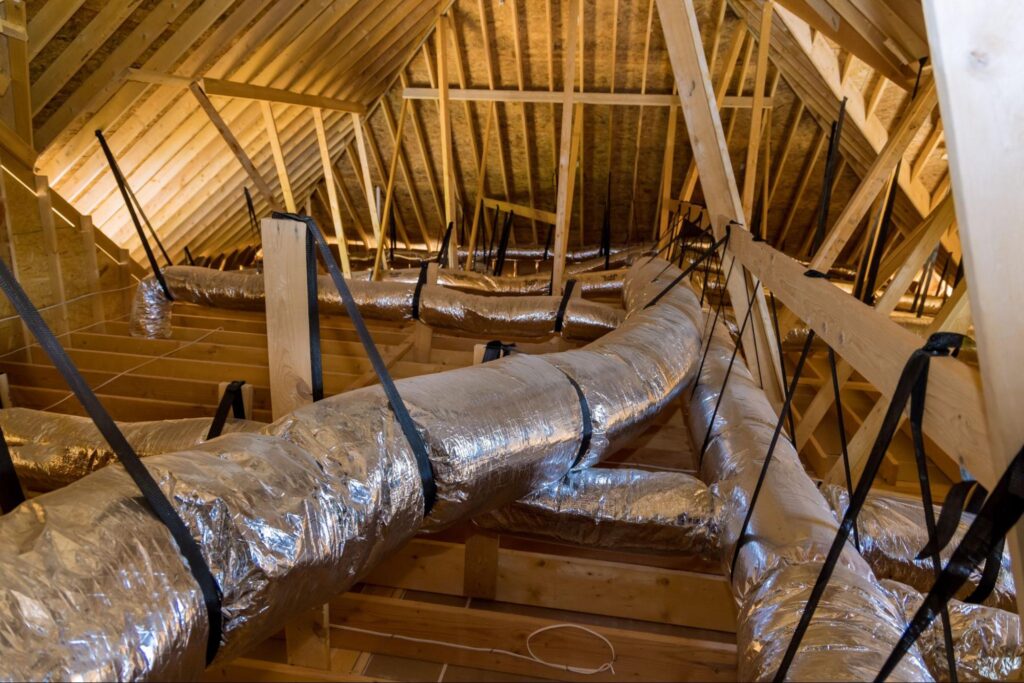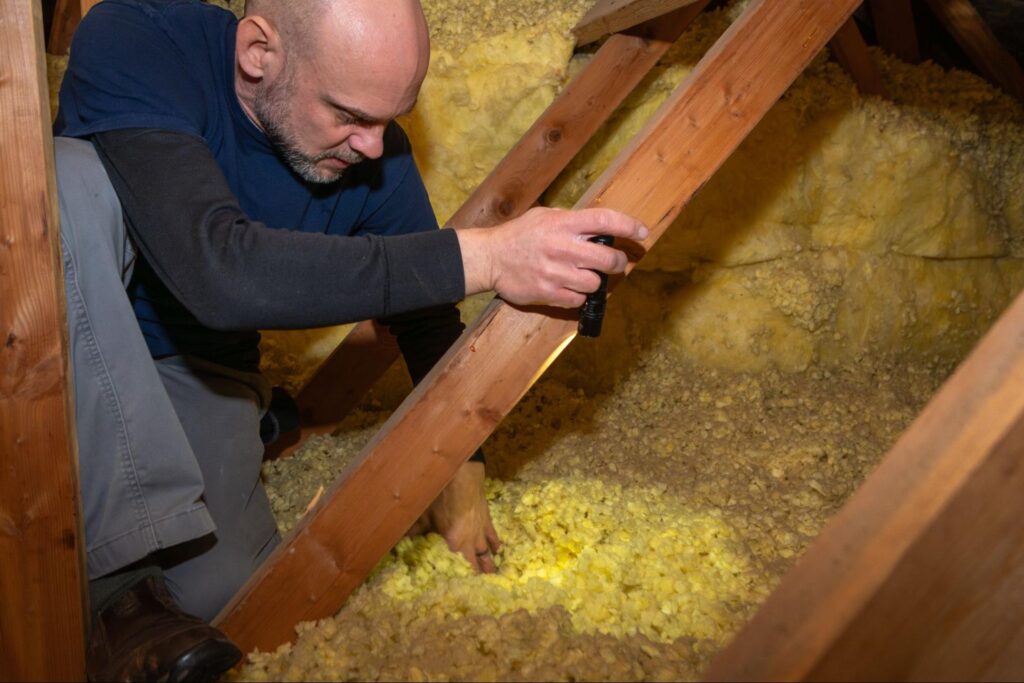Attic Ventilation: What’s The Key to A Healthy Roof?
People may not realize just how important an attic can be to a roof. It’s one of the main contributors to the roof’s overall condition—and we can explain why! Pinnacle Roofing is here to answer this question: What role does proper attic ventilation have in maintaining a healthy roof?
How It Works
Let’s first talk about what good attic ventilation does for a roof. We strategically place a combination of intake and exhaust vents to promote airflow.
- Intake vents are installed along the eaves or soffits of the roof to allow fresh air to enter the attic from outside.
- Exhaust vents are placed near the top of the roof or gables to allow moisture and hot air to escape from the attic to the outside.
When these are not functioning properly, it can be hugely detrimental to the attic and roof overall.
- Moisture Control:
- Attic ventilation regulates moisture levels within the attic space. This should be balanced.
- When excess moisture forms, however, it can lead to the growth of mold, mildew, and rot—which compromises the structural integrity of the roof decking and other materials.
- Temperature Regulation:
- Ventilation also regulates the temperature inside the room. During hot weather, it allows very hot air to escape, preventing the space from overheating.
- This can help in a few ways, especially by alleviating some of the burden on the air conditioning systems.
- Without regulation, excessive heat can shorten the lifespan of roofing materials.
- In colder weather, ventilation combats the formation of ice dams, which can result from warm air from the living space rising into the attic and melting snow on the roof. The air then refreezes on the eaves, creating a dam.
- Prevention of Roof Damage:
- Other roofing materials can be damaged, such as shingles. Too much heat makes them brittle and causes them to deteriorate more quickly.
- Ice dams cause leaks and damage to the structure.
- Energy Efficiency
- Proper ventilation in the attic can contribute to improved energy efficiency in the whole building. Proper ventilation reduces strain on heating and air systems, meaning lower energy bills.
- Preservation of Insulation:
- Excessive heat can create compression on insulation, reducing its R-value and overall effectiveness on the home.
Ensuring Good Ventilation
Every attic and roof structure will be a bit different, but there’s a fairly reliable process for achieving proper ventilation with the help of experts like us.
- Assess Current Ventilation: Evaluate the existing system in your attic to determine if it’s adequate or needs improvement.
- Calculate Ventilation Requirements: Calculate the ventilation requirements based on the size of your attic space. The general guideline is to have 1 square foot of ventilation (combined intake and exhaust) for every 150 square feet of attic space.
- Install the Intake Vents: Common types are soffit vents, continuous soffit vents, or eave vents.
- Position Exhaust Vents: Common types include ridge vents, static vents, roof louvers, or gable vents.
- Ensure Proper Ventilation Area: Make sure the total ventilation area meets your calculated requirements, consulting a specialist if needed.
- Consider Mechanical Ventilation: In special cases, when dealing with larger or more complex attic spaces, mechanical systems such as attic fans or powered roof vents might be necessary to supplement natural ventilation.
- Regular Maintenance: Regularly inspect and clean your ventilation system thoroughly.

Be On the Lookout
The following would be considered symptoms of a ventilation system that isn’t functioning properly. You would probably require some manner of roof repair:
- Inadequate Intake Vents: Upon inspection, you’ll discover that there are only a few small soffit vents on one side of the attic, providing insufficient airflow.
- Blocked Exhaust Vents: The only exhaust vents present are a couple of roof vents located near the peak of the roof. However, these are partially blocked by debris and overgrown vegetation on the roof.
- Insufficient Area: The combined intake and exhaust area falls far below the recommended amount for the given space.
- Obstructed Airflow: Within the attic, insulation has been improperly installed, blocking airflow from the soffit vents to the roof vents. Additionally, boxes and stored items have been placed directly under the vents, making matters even worse.
- Moisture Issues: Due to a lack of airflow, the attic beams become extremely hot during the summer. Moisture accumulates, and the attic lacks ventilation to remove the moisture. Condensation forms on the underside of the roof sheathing and eventually leaks through to the ceiling below, leading to water staining and potential mold growth.

Leave It to the Professionals!
If any of these negative effects have appeared, it’s important to contact an expert like us at Pinnacle Roofing. We obviously specialize on the roofing end of things, but can help to accommodate some of these situations and provide guidance. If you’re in the Memphis area and think your attic ventilation might need to be revised, or if you’re noticing issues with your roof and suspect it to be the culprit, call us at (901) 250-2813.
